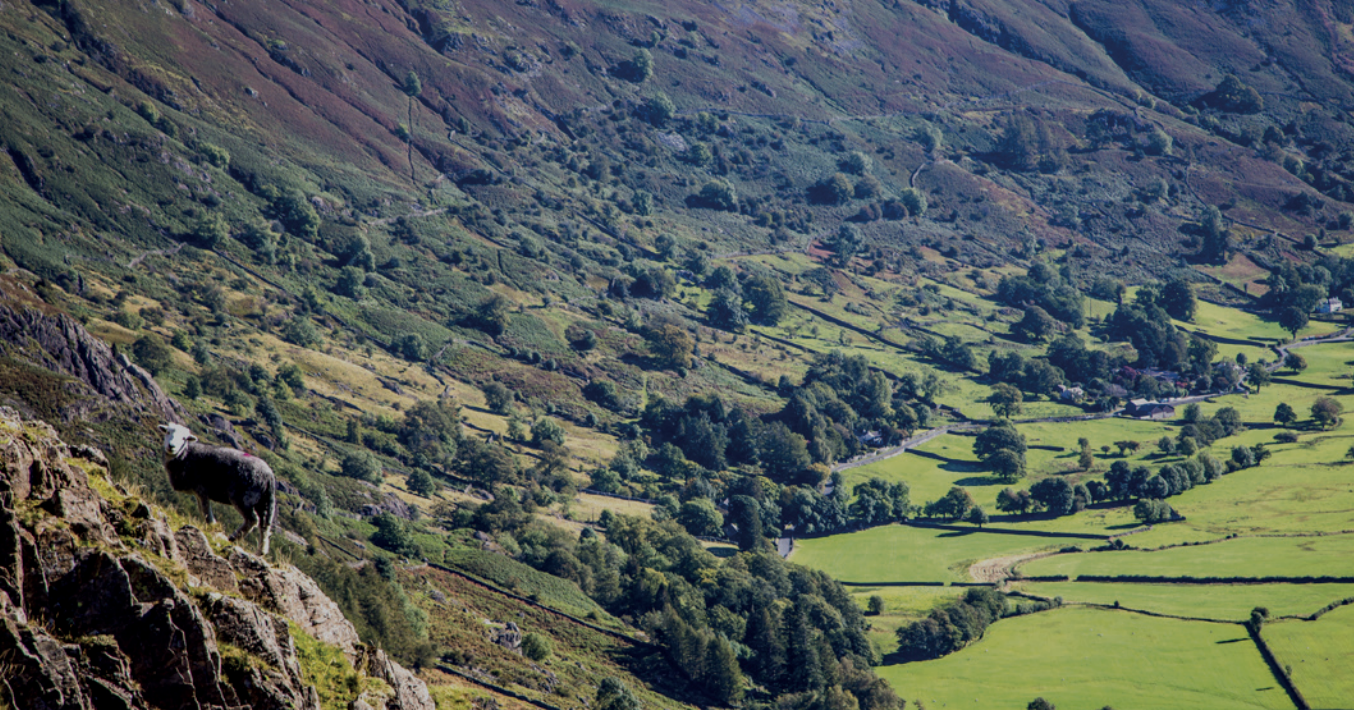
Langdale takes its name from the Old Norse term for ‘long valley’. Located right at the heart of the Lake District, this classic, stunning example of a U-shaped glacial valley was described by John Ruskin as “…the loveliest rock scenery, chased with silver waterfalls, that I ever set foot or heart upon”.
Running east to west from the high central Lake District fells, Langdale boasts Bowfell and Crinkle Crags at its head before meeting with the adjoining Grasmere, Rydal and Ambleside valley to the north of Windermere. One thing it doesn’t have, though, is a lake, which is unusual for a Lakeland valley of this size.
Human activity in Langdale can be traced to Neolithic times and the production of stone axes along with panels of rock art visible on a pair of boulders at Copt Howe, near Chapel Stile. The earliest permanent human settlement was probably in the Bronze Age and when the Romans arrived in the region, they built a road through Little Langdale from their fort in
Ambleside to the one on Hardknott Pass. Norse settlers of the 10th century still have their influence in many local place names, some of which mingled with Old English. Documented land use in Langdale began in the 11th century and by the 16th century there were ten farms recorded here. Langdale today is an important valley for the local Herdwick sheep, with around half of it used specifically as high grazing land for this hardy local breed.
When visitors started to come to the Lake District in significant numbers, Langdale was slow to become a tourist attraction. It didn’t feature in Thomas West’s famous ‘Guide to the Lakes’ and relied on rock climbing as its main draw with many locals acting as guides to those who wanted to climb the crags. Wordsworth did much to increase the appreciation of this lovely valley, writing about Blea Tarn in his poem ‘The Excursion’ and Dungeon Ghyll Force in ‘The Idle-Shepherd Boys’. He also referred to it in one text as a “must visit” valley.
From a conservation point of view, Langdale has never really been troubled by any major commercial projects or controversial infrastructure, yet it has played a key part in the development of the conservation movement in the Lake District in the 20th century.
Educational pioneer, George Trevelyan, who once had a family holiday home in the valley, is known for his donations of Langdale farms to the National Trust. Beatrix Potter also donated areas of Langdale, and today the National Trust owns and cares for the majority of the valley. There is also the National Trust’s High Close Estate and Arboretum, a beautiful 11 acre garden between Elterwater and Grasmere.
In short, Langdale’s narrow valley enjoys a broad history and a wealth of attractions to all who visit it.